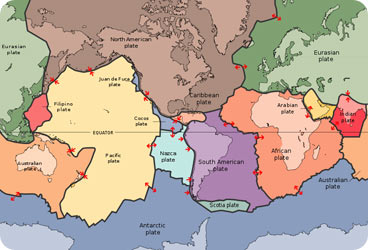Cosmetics companies say that a good moisturizer keeps your skin looking young. And the youngest parts of Earth’s skin are well moisturized, too -- they’re at the bottom of the oceans.
Earth’s “skin” is the crust -- a thin layer of rock that makes up the planet’s surface.

There are two kinds of crust. One kind makes up the continents. It’s thick but lightweight, and it’s up to four billion years old. The other kind makes up the ocean floor. It’s thin but dense, and none of it is more than 200 million years old.
The ocean crust is young because that’s where new crust is formed.
The crust forms the top layer of several “plates” that float atop the denser rock below, known as the mantle. Most of the plates meet under the oceans. Some of them are moving away from each other. As they pull apart, molten rock pushes upward from the mantle to fill the gap. That forms the mid-ocean ridges -- chains of volcanic mountains that swirl around the entire planet.
The ridges are the youngest crust of all. As the plates continue to spread apart, though, the newly formed crust moves outward, allowing newer material to take its place. The older rock gets denser, so it slowly sinks back into the mantle. The whole process takes less than 200 million years.
That’s not the end of the story, though. As the rock in the ocean crust sinks into the mantle it heats up and melts. Eventually, it may rise back to the surface at another mid-ocean ridge -- once again building new crust on the ocean floor.

